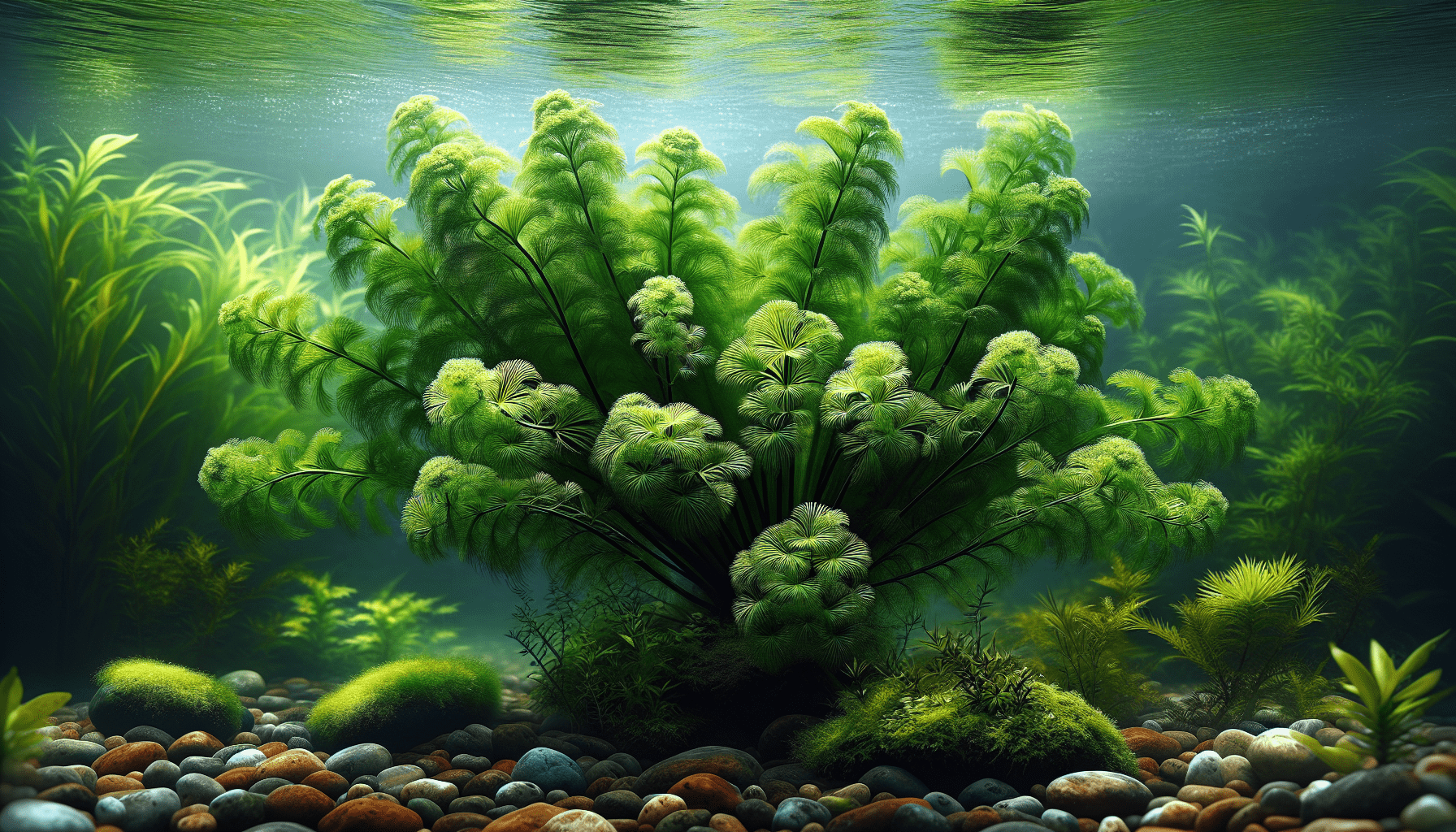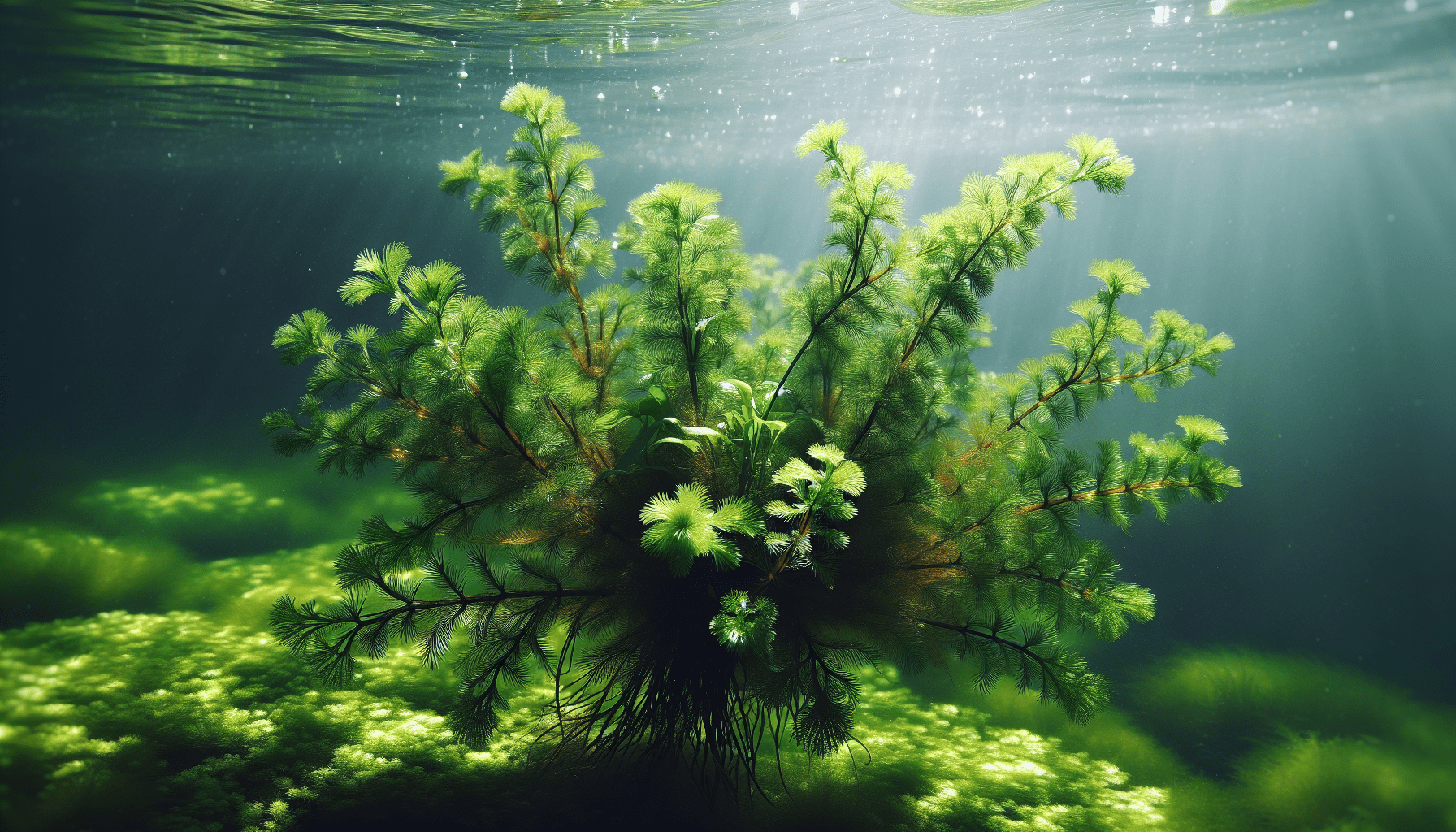As you begin to explore the captivating world of aquatic botany, one of your most intriguing subjects is undoubtedly the plant known as the “whorled watermilfoil.” This fascinating aquatic flora, characterized by its distinct leaf morphology and varying growth habits, emerges from watery habitats delivering not just aesthetic pleasure but also contributing significantly to the ecosystem it inhabits. In this article, you’ll gain insights into the overall profile of the whorled watermilfoil – its taxonomy, habitat, lifecycle, and the ecological significance it holds in freshwater ecosystems around the globe.

Basic Description of Whorled Water Milfoil
Whorled Water Milfoil, scientifically known as Myriophyllum verticillatum, is an aquatic, perennial herb, recognized for its distinct whorled growth. Its feather-like, immersed leaves and elongated stem give it a unique resemblance to its land-based namesake, the milfoil.
Botanical Name and Classification
The Whorled Water Milfoil’s botanical name is Myriophyllum verticillatum. This categorization acknowledges its descriptive physical features, as ‘Myriophyllum’ from Greek signifies ‘many leaves’. This naturally occurring plant belongs to the Haloragaceae family, a group known for their aquatic habitat affinity.
Physical Appearance
Whorled Water Milfoil is characterized by its long, slender stems, reaching lengths of up to 2 metres, which often float on the water’s surface. Its distinct leaves are arranged in whorls of 4 to 6 around the stem, giving it a feather-like appearance. These are submerged, offering perfect support for its adapted aquatic lifestyle. While this plant primarily remains underwater, it reveals its small, yellowish-green flowers on the water surface during blooming.
Natural Distribution and Habitat
Native to Europe and Asia, Whorled Water Milfoil has expanded its borders to the United States and other regions. This plant naturally thrives in still or slow-moving water bodies, including ponds, lakes, and slow-flowing streams. The Whorled Water Milfoil prefers a temperate climate, often found in slightly acidic to alkaline waters.
Botanical Name and Classification
The botanical name for Whorled Water Milfoil is Myriophyllum verticillatum.
Family and Genus
It belongs to the Haloragaceae family and the Genus Myriophyllum, in accordance with its unique physical structure and habitat preferences.
Species Name
The species name, verticillatum, acknowledges the plant’s distinct whorled leaf arrangement around the stem.
Common Names and Synonyms
While known principally as Whorled Water Milfoil, it is also associated with numerous synonyms and common names, including Coontail, Fourleaf Water Milfoil, and Hairlike Water Milfoil, corresponding to its unique leaf arrangement and appearance.
Physical Appearance
The physical appearance of the Whorled Water Milfoil plays a vital role in its success as an aquatic plant species.
Description of the Plant Structure
Whorled Water Milfoil’s plant structure is adapted for aquatic living. Its long, slender stems assist in its buoyancy, while the bulk of the plant remains submerged. Its primary root is firmly anchored into the waterbed, with additional fine roots appearing along the stem length, supporting in nutrient absorption.
Leaf Characteristics
The plant’s feather-like leaves, which spiral around the stem in whorls, remain immersed in the water. These multiforked leaves, with up to 14 leaf segments, aid in photosynthesis, also serving as an excellent refuge for aquatic fauna.
Flower and Seed Description
The plant’s diminutive flowers emerge upon the water surface, producing seeds encased in a fruit capsule. These greenish-yellow flowers are wind-pollinated and tend to bloom in summer.

Natural Distribution and Habitat
This native to Europe and Asia has spread significantly, expanding its kingdom across various regions.
Geographical Distribution
Over time, Whorled Water Milfoil has made its way into North America, Australia and New Zealand, primarily due to its growth and adaptability in various water bodies.
Preferred Water bodies
Whorled Water Milfoil prospers in still to slow-moving waters, colonizing freshwater environments like dams, ponds, and sluggish streams. Its root habitat adapts to different substrates, and the plant can grow in varying water depths.
Typical Climate and Conditions
This plant typically thrives in temperate climates, preferring slightly acidic to alkaline waters and requiring full sunlight for optimum growth.
Life Cycle and Reproduction of Whorled Water Milfoil
The life cycle and reproductive strategies of Whorled Water Milfoil ensure its survival and growth in variant aquatic conditions.
Propagule Dispersion
Whorled Water Milfoil propagates via seed dispersal and vegetative fragmentation. The plant disperses its seeds in surrounding water bodies, guaranteeing its proliferation. Stem fragments also have the ability to distort and generate new plants.
Growth and Development
The Whorled Water Milfoil has a fast growth rate, developing from seeds or fragmented stem pieces. The plant advances through various stages of development, from young emerging plants to mature aquatic flora.
Reproduction Strategies and Adaptations
This aquatic plant reproduces through sexual and asexual mechanisms. Its flowers and seeds accommodate sexual reproduction, while its stem fragments facilitate vegetative propagation. Adapting to its aquatic environment, Whorled Water Milfoil sustains its reproduction rate throughout different seasons.
Propagule Dispersion
Whorled Water Milfoil ensures successful dispersion of its propagules, contributing to its widespread growth in suitable habitats.
Role of Water Currents
The water currents play a crucial role in carrying the plants’ seeds and stem pieces, enabling the spread of Whorled Water Milfoil across various water bodies.
Role of Fauna
Aquatic fauna, specifically birds and waterfowls, contribute to the transportation of seeds within and across water bodies, facilitating the plant’s growth in new habitats.
Human-Induced Propagation
Human activities such as boating and fishing gear can inadvertently transport stem fragments, contributing to the unintentional propagation of Whorled Water Milfoil in new locations.
Growth and Development
The fast-growing Whorled Water Milfoil navigates through various developmental stages, interacting with other aquatic plants as it matures.
Typical Growth Rate
Whorled Water Milfoil typically exhibits rapid growth, with a single plant multiplying into several plants within a relatively short period.
Stages of Development
The plant progresses through various developmental stages – from germinating seed to young plant to a mature aquatic flora, capable of sexual and asexual reproduction.
Interactions with Other Aquatic Plants
During its growth, Whorled Water Milfoil often intermingles with other aquatic plant species, sometimes outcompeting them for nutrients and space.
Reproduction Strategies and Adaptations
Whorled Water Milfoil utilises an array of reproduction strategies, ensuring the species’ continuity and proliferation in various aquatic environments.
Sexual and Asexual Reproduction
While the plant flowers and seeds accommodate sexual reproduction, its capability for vegetative propagation through stem fragments contributes to asexual reproduction, ensuring its survival under different seasonal conditions.
Special Adaptations for Aquatic Environment
Whorled Water Milfoil has adapted numerous strategies to sustain in an aquatic environment, including its feather-like leaves that facilitate underwater photosynthesis, and root systems that draw nutrients from both the waterbed and the water body.
Response to Different Seasons
This hardy plant demonstrates exceptional resilience to varying seasonal conditions, maintaining its proliferative capacity throughout.
Ecological Role and Interactions
Whorled Water Milfoil, while being pivotal to aquatic ecosystems, can also affect human activities in various ways.
Role in the Ecosystem
Within its native habitats, Whorled Water Milfoil contributes to biodiversity, supporting a variety of aquatic fauna. It offers refuge and breeding grounds for a plethora of aquatic organisms, from micro-invertebrates to fish.
Interactions with Aquatic Animals
Aside from providing refuge and breeding sites, Whorled Water Milfoil serves as a food source for certain grazing aquatic animals, maintaining a balance in the aquatic food web.
Potential Impacts on Human Activities
Although this plant offers ecological benefits within its native ranges, in areas where it is invasive, it can influence human activities. For instance, in dense infestations, the plant can obstruct waterways and affect recreational activities such as boating and swimming.
Potential Impacts on Human Activities
Whorled Water Milfoil’s vigorous growth can lead to implications on human activities, primarily in invaded areas.
Impacts on Water Recreation
Invasive growth can impede water recreation activities like swimming, fishing, and boating, due to the plant’s dense underwater growth.
Influence on Water Quality
While Whorled Water Milfoil plays a role in nutrient cycling, excessive growth can lead to oxygen depletion in water, affecting the water quality and other aquatic lifeforms.
Use in Aquatic Horticulture
On the flip side, Whorled Water Milfoil has uses in aquatic horticulture, employed as an ornamental plant for freshwater aquariums, owing to its luxurious green feather-like leaves. However, management measures are necessary to prevent any unintentional dispersal into non-native water bodies.
In sum, the Whorled Water Milfoil, with its unique characteristics, dynamic growth, and survival strategies, is a true testimony to nature’s adaptability, exhibiting the tendency to see life prevail, even in the harshest of conditions. Understanding its role and potential impact within the ecosystem can aid in meticulous management and exploit its benefits effectively.